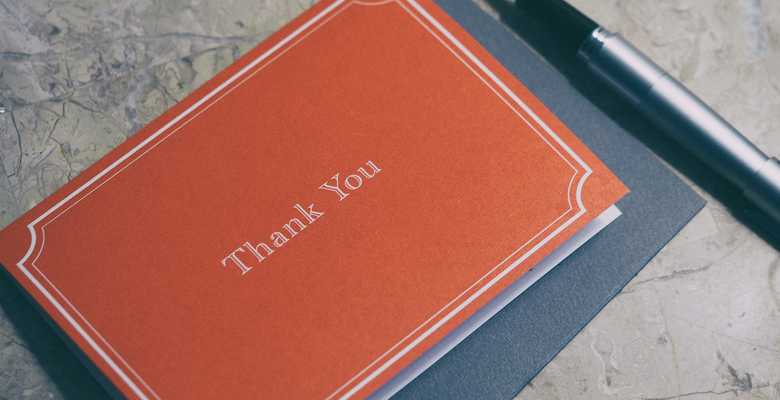Build an AI website in 60 seconds
AI generates your personalized website instantly with built-in scheduling, payments, email marketing, and more.
Start for free
Your 2025 guide to writing perfect confirmation emails

Learn more about what makes a confirmation effective, the different types of confirmation emails, and how to write yours.
What is a confirmation email?
A confirmation email is an email that lets the user know that some kind of transaction has taken place. The most familiar example of a confirmation email is when someone places an online order and receives an email confirming that their order was received.
You can also send confirmation emails to let people know they've subscribed to or unsubscribed from a mailing list, scheduled an appointment, booked a reservation, and more.
Because confirmation emails tend to follow similar structures, regardless of their content or recipient, they're effortless to automate. Automating confirmation emails allows you to keep your customers in the loop without having to email them yourself.
Do you have to send a confirmation email?
Technically, no, you don't have to send confirmation emails. But let's imagine the customer's experience. They order something from your website, see money taken from their bank account, and then ... nothing. They hear nothing from you.
Not only is this cold shoulder business rude, but it also creates two issues for your business. One is that your customer doesn't know if they can trust you. They don't know if their order was received or if your website is a scam.
The second issue is that it leaves your customers without vital information. Say your customer has just scheduled a reservation with your hotel. They close their browser and check their email, ready to put their reservation date in their calendar. Except that when they go to check their email, there's nothing from you. They can't remember their reservation details and now have to call your customer support.
Both of these tie into the underlying issue, and that's meeting customer expectations. Consumers expect to receive a confirmation email when they conduct an online transaction, and betraying this expectation feels just like that — a betrayal.
The different types of confirmation emails
Though each confirmation email should be unique to the company sending it, the majority of these emails fall under one of four categories.
1. Order confirmation
As mentioned earlier, this is the most common type of confirmation email, and it's one that you're likely familiar with. Order confirmation emails let customers know that a business has received their order. It functions similar to a receipt, and a lot of companies even include receipt information in these emails.
Order confirmation emails should include information like a customer's order number, expected dates for shipping and arrival, the progress of delivery, the amount charged, and links for managing and canceling their order.
This email not only lets them know that their order was received but also serves as a one-stop solution for most of their questions.
2. Booking confirmation
The second type of confirmation email is the booking confirmation. These emails are sent anytime someone reserves something, like plane tickets, concert tickets, hotel rooms, restaurant reservations, medical appointments, and so on. Similar to order confirmation emails, booking confirmations should act as a receipt.
In a booking confirmation, you want to include information related to the event date with options to add the time to their calendar app, like iCal or Google Calendar. If the person is booking seats, you should also include which seats they booked and how much they paid for each one.
Unlike order confirmation emails, booking confirmations are the first part of an ongoing relationship between you and the customer because they haven't used their purchase yet. That means a booking confirmation works best when it's the first in a series of automated emails leading up to the booked event or service.
3. Subscription confirmation
Subscription confirmation emails are generally used to confirm an unpaid service, which sets them apart from the other types of confirmation emails. They're used to verify that a person signed up for your newsletter. Creative newsletter ideas are a great way to keep customers engaged with your business.
Because customers haven't purchased anything from you, a subscription confirmation email probably isn't going to double as a receipt. Instead, it should serve as a welcome email to your newsletter. In this welcome email, you can include links to your top posts, discounts on your services, and other incentives that will get new readers excited about you.
Alternatively, your subscription confirmation emails can act as a double opt-in process. This means that someone signs up for the newsletter on your website and receives an email with a link that they click to confirm their subscription. This process helps prevent accidental subscriptions and frustrated customers.
4. Registration confirmation
The last type of confirmation email is the registration confirmation. This is similar to a subscription confirmation email, except that it's usually for a paid service or newly created account. When you create a new account with Google and receive an email directly afterward, that is a registration confirmation email.
If a registration email is tied to a purchase, then you should include details of that purchase in the email. Registration emails are often used for recurring subscription costs, making customers aware of how much they owe during each subscription period and when payments are due.
Registration confirmation emails should be one of the first ways that customers interact with your service. You can use it to confirm their email address, tell them a little more about their new account, and walk them through the onboarding process.
What to include in a confirmation email
Although every confirmation email is different, there are things that you can include in any type of confirmation email that will boost its effectiveness. Below are some of the elements we believe make for an engaging confirmation email.
Explain the benefits you provide
The first thing you want to establish with a confirmation email is the value of what your customer just purchased or signed up for. In a registration and subscription confirmation, this is relatively straightforward. Just tell your customers what they will gain by using your service or reading your newsletter.
For order and booking confirmations, the value is a little harder to convey, as the email marks the end of your transaction with the customer. Keep customers engaged and supported by providing them with benefits in the email, like order tracking, calendar integration, links to customer service, etc., until they receive their product.
Set expectations
Here's another tip that will vary slightly depending on the type of email you send: order and booking confirmations vs. subscription and registration confirmations.
In the first group, the expectations will be when they can expect their product to arrive, what it will look like, what their view will be at the restaurant, a look at your menu, etc.
In an order/booking confirmation, the customer wants to know when they can expect their product to arrive, where their seat is at the restaurant, details about your menu, etc. In a subscription/registration email, you need to set the expectations for the service they just signed up for. Let them know what they can expect to see in your newsletter or describe some of the features included in their account.
Build excitement
Finally, a confirmation email should boost your customer's enthusiasm surrounding their transaction, even if it was free. Make them feel rewarded for using your service or product. If they signed up for a newsletter, they should be excited to read the first installment. If they purchased a product, they should be eagerly awaiting its arrival.
With order and booking confirmations, the purchase itself is generally exciting enough on its own. For subscription and registration confirmations, you'll want to include some sort of incentive to generate excitement. This could be a limited-time offer for signing up, a link to select content, or an exclusive account badge.
Tips for writing a confirmation email
Keep things concise
Brevity is critical in any customer interactions via email. That doesn't mean you have to be curt or withhold information, but your customers should never feel bored by your confirmation emails. Otherwise, they'll just ignore them.
Much like when creating a website layout, you want to think about the information that your customer will care about most, and then make that information the most visible. Your customers should be able to get all of the information they're looking for in a matter of seconds.
Add a call to action
Confirmation emails are a great place to include a CTA because your customer is already interested in the service you have to offer. That means your CTA will be more effective here than just about anywhere else, making it one of the best ways to promote a new product.
If you're not sure how to frame your CTA, you can look to your other confirmation emails for inspiration. For example, if someone has just purchased a product from you, you can include a link to your newsletter in the order confirmation email. This kind of crossover will build a relationship between your brand and your customer.
Write a confirmation email with B12 Email Marketing
Now it's time to put together everything we've discussed, and what better way to do that than with B12's email marketing tools! When you build your website with the B12 Editor, you get email marketing tools included. To access these tools, navigate to "Your Business" in your website editor and select "Add email" to get started.
You want to start a confirmation message with the reason you're sending the email. If it's an order confirmation, you should put prominently mark Order Confirmation at the top of the email. If it's for a subscription confirmation, use Welcome to our Newsletter, and so on.
The body of the email is where you should include detailed information like the order number, booking date, newsletter benefits, and registration information. Conclude the email with a "thank you," possibly an incentive (like a special offer), and that's it!
Start sending confirmation emails today
If you aren't already using confirmation emails for your business, you're leaving out a key component of customer interactions. We hope you now have plenty of ideas to start creating your own confirmation emails. For more tips on optimizing your website and building your brand, check out the rest of the articles available from B12.
Get email automation built into your online presence
Get started on a new website that includes tools for email marketing and automation
Draft your site in 60 seconds
Get an AI website made specifically for you that's free to launch.
Start for free ✨No credit card required
Spend less time on your website and more time growing your business
Let B12 set up your professional online presence with everything you need to attract, win, and serve clients.



